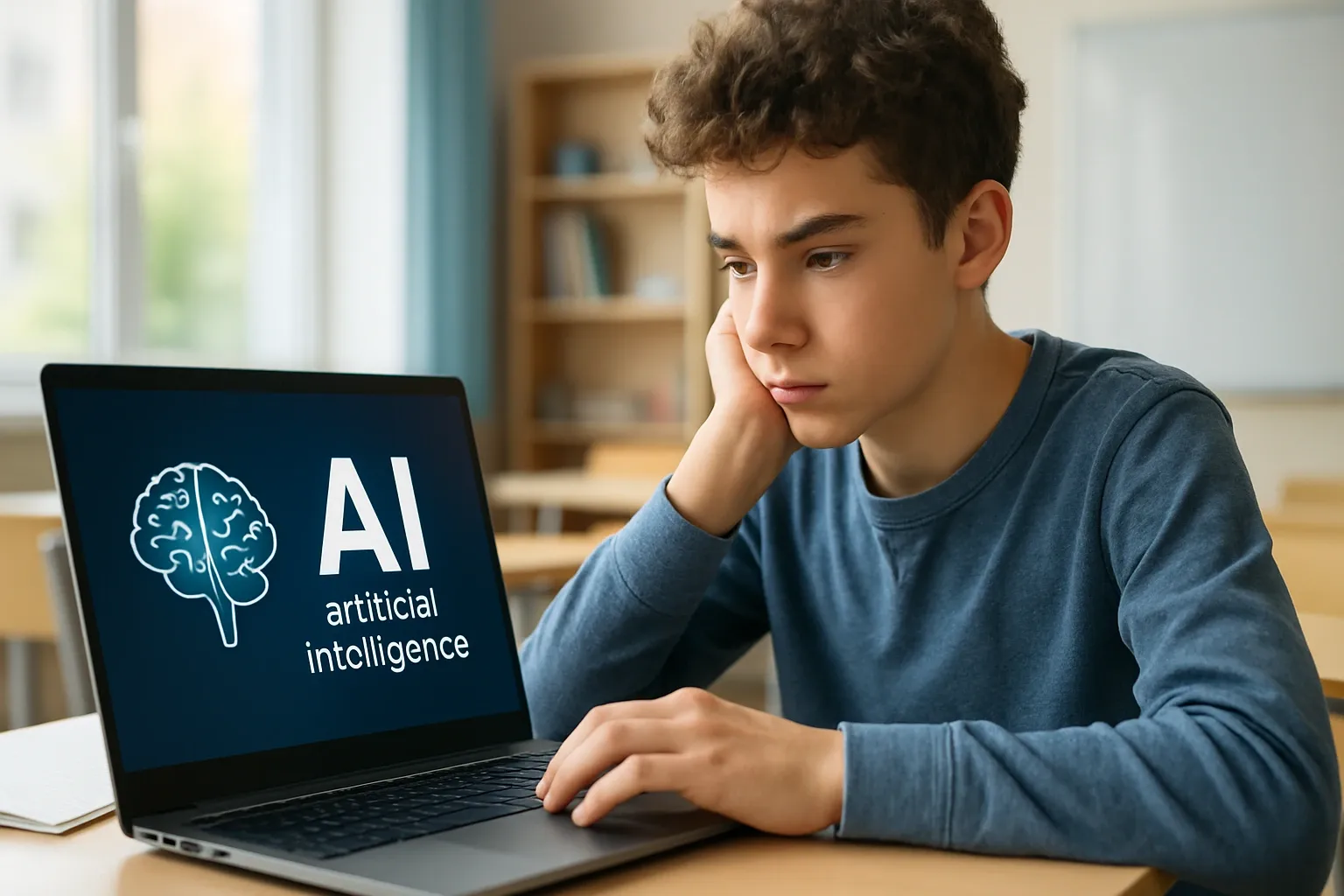AI in Education: Enhancing Student Engagement is more than just a trend—it’s a real shift in how we connect with students. But let’s be honest: while technology can grab attention, it doesn’t always guarantee real learning. Have you ever noticed students using AI tools like ChatGPT to complete tasks in seconds, without even reading the question? It’s fast, yes, but are they really learning—or just copying?
In this article, we’ll talk heart-to-heart about what it means to truly engage students with AI. Not just to make classes more dynamic, but to make them more meaningful. Let’s explore how we can guide young people to use AI wisely—not as a shortcut, but as a tool for deeper understanding and a brighter future.
The Real Difference Between Learning and Copying from AI
Let’s start with something important: using AI to learn is not the same as using AI to copy answers.
Imagine this: you’re a teacher watching your student type a question into an AI tool and get a perfect answer in seconds. They copy and paste it into their assignment and hand it in. It looks great—but did they learn anything?
AI can be a powerful helper, but it can’t do the thinking for us. True learning happens when students interact with knowledge, make mistakes, and build their own understanding. If they just take ready-made answers, they’re skipping the process that really matters.
Think of it like using a calculator without learning math. Sure, you’ll get the right result. But when faced with a problem where logic and reasoning are needed, you’ll be lost.
Students Are Not Just Consuming Information —They’re Creators
Today’s students are growing up in a digital world. They have tools that we never dreamed of in school. But with great tools come great responsibilities.
Students need to be taught that AI is like a smart companion, not a substitute for their brain. They can use AI to brainstorm, organize ideas, ask deeper questions, and learn new ways to think. But it should never replace critical thinking.
Here are some healthy ways students can use AI without becoming dependent on it:
- Ask AI to explain a concept in a simpler way.
- Use it to compare different perspectives on a topic.
- Generate creative prompts for writing or projects.
- Organize notes or summaries for revision.
The key is: let AI support the learning, not do it all.
👉 Understand the pros and cons of AI in education for students. Learn how to balance technology with human interaction in schools.
A Future Shaped by Those Who Know How to Use AI
Let’s look at the future. We’re not just preparing students for tests anymore—we’re preparing them for jobs that don’t even exist yet.
More and more professions will rely on knowing how to use AI effectively. It won’t be enough to memorize facts. People will need to:
- Know how to ask the right questions.
- Understand how to analyze AI responses.
- Be able to check for accuracy.
- Use AI to solve real problems.
In other words, students need to learn how to be smart users of technology, not passive consumers. Just like we teach them how to use books, calculators, or computers, we now have to teach them how to use AI ethically, critically, and creatively.
And that’s a skill that can’t be copied.
According to UNESCO, it’s crucial to prepare students not just to use AI but to understand it critically, so they can help build a fairer and more ethical future shaped by technology.
The Role of Teachers: Guiding, Not Controlling
Many teachers feel nervous about AI, and that’s understandable. But instead of fearing it, we can embrace our role as guides in this new world.
Think of yourself as a coach. You don’t run the race for your students—you train them to run it well. The same goes for learning with AI. Teachers can:
- Set clear rules about AI use in class.
- Teach students how to check for plagiarism.
- Show examples of creative and smart use of AI.
- Encourage open discussions about the risks and benefits.
AI won’t replace teachers. It will make their job even more important.

Creating a Learning Culture That Values Effort and Curiosity
When AI gives fast answers, it’s tempting to skip the process. But let’s not forget: the process is where the magic happens.
Effort, curiosity, and resilience—these are the values that make a learner successful in the long run. If we want AI to truly help students, we have to build a culture that:
- Celebrates questions more than perfect answers.
- Rewards progress, not just results.
- Encourages students to reflect, think, and re-think.
It’s up to us to make sure AI becomes a bridge, not a shortcut.
The Emotional Side: Motivation and Connection Still Matter
AI can do a lot of things, but it can’t replace human connection.
Teachers still play a central role in inspiring students, recognizing their efforts, and understanding their struggles. And students still need relationships, encouragement, and a safe space to learn.
Technology may evolve, but the emotional side of learning is timeless. AI can support—but never replace—the heart of education.
Key Points About AI in Education: Enhancing Student Engagement
- AI should support learning, not replace it.
- Copying from AI tools hinders deep understanding.
- Students must learn to use AI critically and ethically.
- Future jobs will demand AI literacy and problem-solving.
- Teachers are essential guides in this tech-driven world.
- Emotional connection and motivation are still key in education.
Conclusion
Artificial Intelligence in education offers powerful tools to enhance student engagement. But using it wisely is what really counts. Students need to be active participants, not passive users. Teachers, on the other hand, are more essential than ever—to guide, motivate, and humanize the learning process.
So, let’s teach our students not just to use AI, but to learn with it, grow with it, and think beyond it.
What do you think? Have you seen students using AI the right way? Share your thoughts in the comments below!

